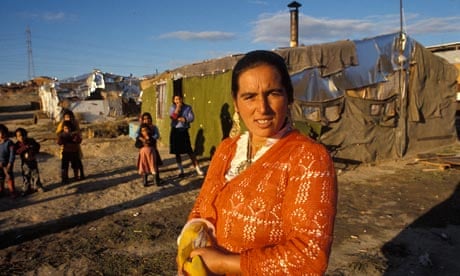In parts of Europe they are still shunned as disruptive outsiders or patronised as little more than an exotic source of music and dance, but Gypsies have ancient roots that stretch back more than a millennium, scientists have proved.
A genetic analysis of 13 Gypsy groups around Europe, published in Current Biology journal, has revealed that the arrival on the continent of their forebears from northern India happened far earlier than was thought, about 1,500 years ago.
The earliest population reached the Balkans, while the spread outwards from there came nine centuries ago, according to researchers at Spain's Institute of Evolutionary Biology and elsewhere.
"There were already some linguistic studies that gave clues pointing to India and genetic studies too, though without being precise about the where or when," said David Comas, who led the research group.
"Now we can see that they arrived in one single wave from the north-west of India around 1,500 years ago."
Gypsies were originally thought to have come from Egypt and some of the earliest references to them in English, dating back to the 16th century, call them "Egyptians".
Early European references describe wandering, nomadic communities who were known for their music and skill with horses.
They arrived in Spain in the 15th century or earlier – with records of groups of up to a hundred Gypsies travelling together, often led by someone who termed himself a "count" or "duke" – and held on despite attempts to expel them or imprison those who refused to give up their language and culture.
They were accompanied by a legend that they had been expelled from Egypt for trying to hide Jesus.
The new study now sets their arrival in Europe in the sixth century – a time when Britain was still in its early post-Roman era.
Gypsies, often referred to as Roma, are found across all of Europe and make up the continent's largest ethnic minority. There are about 11 million of Gypsies in Europe.
Centuries of discrimination, including systematic extermination by some 20th-century fascist regimes, have helped keep many of them marginalised.
"There is still widespread discrimination and this is the most marginalised minority in Europe," said Robert Kushen of the European Roma Rights Centre in Hungary.
Both France, during Nicolas Sarkozy's presidency, and Italy, under Silvio Berlusconi, targeted Gypsy communities with populist eviction policies, while long-running discrimination continues in much of eastern Europe.
Sarkozy's Socialist successor, François Hollande, has done little to change policies in France.
"They suffer from forced evictions – and have been targeted recently in both France and Italy," Kushen said. "And it seems that in some places, like Romania and Bulgaria, the laws applying to free movement within the European Union don't quite apply to them in the same way that they apply to other people."
But the stereotypical wandering Gypsy in a mule-drawn caravan belongs to the distant past. The vast majority of Europe's Gypsies have long been settled. "There is still the myth of the nomad, which drives bad policy in places like Italy, where the government maintains they are nomads when in fact they are not," said Kushen.
His group has called on the European Union to bypass national governments, many of whom ignore EU rules on the treatment of Gypsies and Roma, in order to enforce policies.
And Comas's study shows not only that they share common ancestry from north-west India, but also that they have mixed extensively with other Europeans.
"That is more pronounced in northern and western Europe," he said. "They conserve the genetic footprint from India, but their ancestors are both European and Indian."
Gypsies on screen
Black Cat, White Cat
Emir Kusturica's 1998 madcap comedy set on the frontiers of Serbia and Bulgaria revolves around Gypsy families living by the Danube. The film started life as a non-fiction documentary on Gypsy music, and has a fabulous soundtrack. Its main characters switch easily from the Gypsy language of Romani to Serbian and Bulgarian.
My Big Fat Gypsy Wedding
Channel 4's series revealed the hidden glory of marrying Gypsy-style in Britain. The series attracted audiences of 7 million, made an unlikely star of Paddy Doherty and spawned spinoffs such as Thelma's Gypsy Girls, while also attracting criticism from some Gypsy and Traveller communities for its depiction of their lifestyle.
Los Tarantos
This 1963 Spanish version of Romeo and Juliet features legendary flamenco dancers Carmen Amaya and Antonio Gades in a tragic romance set among Catalan Gypsies from rival families in the beachside 1960s shantytowns of Barcelona.
